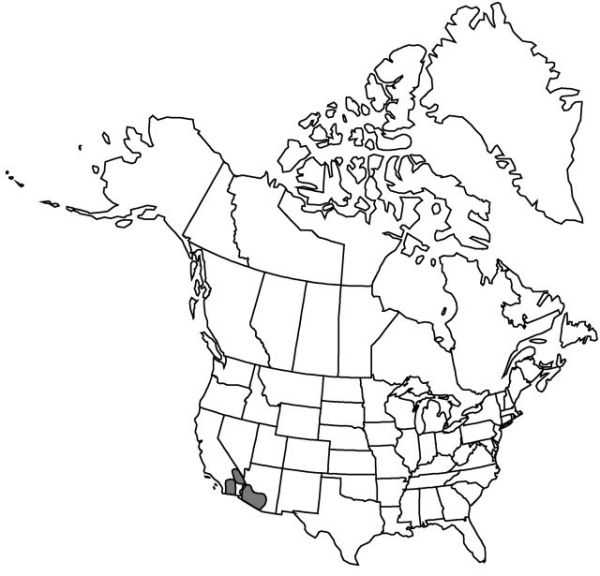Agave deserti
Trans. Acad. Sci. St. Louis 3: 310. 1875.
Plants acaulescent or short-stemmed, sparsely or prolifically suckering, trunks 0.2–0.4 m; rosettes solitary or numerous, 3–7 × 4–8 dm, compact to rather open. Leaves ascending, widest at base, (20–)25–70 × 4.5–10 cm; blade grayish, gray- or blue-glaucous, yellowish green, or greenish, occasionally cross-zoned, linear-lanceolate to lanceolate, rigid, adaxially concave, abaxially convex; margins straight or undulate to crenate, armed, teeth single, weakly attached, well defined, of 2 types, 2–3 mm or (5–)6–8 mm, (1–)1.5–3 cm apart; apical spine light or dark brown to gray, subulate to acicular, 2–4 cm. Scape 2–6 m. Inflorescences paniculate, not bulbiferous, open; bracts persistent, triangular, 8–15 cm; lateral branches 6–15, slightly ascending, comprising distal 1/5–1/4 of inflorescence, longer than 10 cm. Flowers 12–48 per cluster, erect, 3–6 cm; perianth yellow, tube shallow, campanulate or funnelform, 3–10 × 9–15 mm, limb lobes wilting soon after anthesis, spreading, equal, 13–20 mm; stamens long-exserted; filaments inserted unequally above middle or at rim of perianth tube, erect, yellow, 2.5–3.5(–4.2) cm; anthers yellow, 13–21 mm; ovary 1.6–4 cm, neck slightly constricted, 4–6 mm. Capsules short-pedicellate, ovoid to oblong or obovoid, 3.5–5.5 cm, apex beaked. Seeds 5–6 mm.
Distribution

sw United States, nw Mexico.
Discussion
Varieties 3 (2 in the flora).
Selected References
None.
Lower Taxa
Key
| 1 | Perianth tube campanulate, 3–5 mm; filaments inserted at top of tube; plants sparsely to prolifically suckering; rosettes numerous. | Agave deserti var. deserti |
| 1 | Perianth tube funnelform, (3–)5–10 mm; filaments inserted above middle but well within tube; plants rarely with 1–3 suckers; rosettes usually solitary. | Agave deserti var. simplex |